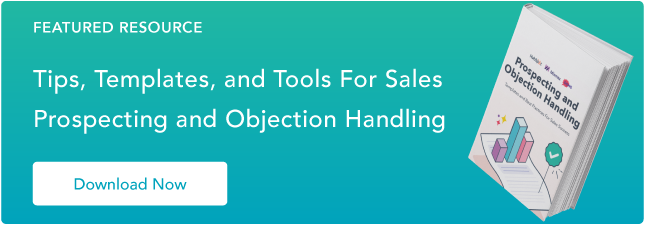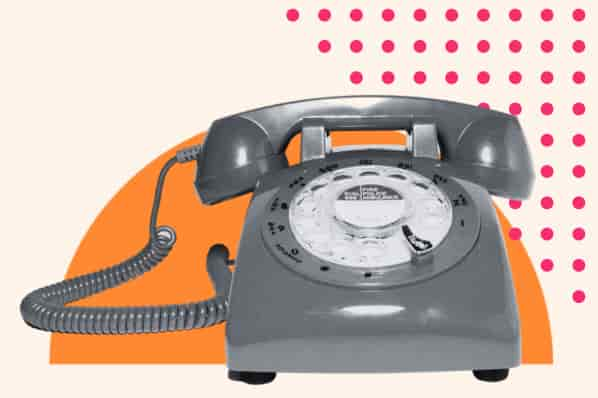Sales development representatives (SDRs) have a unique opportunity to help account executives close deals.

Traditional sales skills apply, but a few hard and soft skills for an SDR role will help inside sales teams bring even more success.
In this post, we’ll define SDR sales, then dive into the skills every sales development rep needs to master.
Table of Contents
- SDR Sales
- What does a sales development representative do?
- SDR Skills
SDR Sales
SDR stands for sales development representative. As a member of the inside sales team, a person in this role focuses on outbound prospecting, moving leads through the pipeline, and qualifying the leads they connect with. While SDRs don’t close deals, they help sales reps by determining if a lead will be an ideal customer fit.
Before we discuss how to develop critical skills for SDRs, let’s review how the SDR position differs from other sales roles.
What does a sales development representative do?
Sales development reps are measured on their ability to move leads through the sales pipeline. They focus on nurturing quality leads over closing deals. On the other hand, sales reps are measured on their ability to close deals that meet or exceed their quota for a given time period. Although the two are different, these roles rely on each other to meet both their individual and business goals.
From start to finish, the inside sales team structure functions like this:
- The marketing team sends lead information to the SDRs.
- The SDRs are responsible for qualifying and nurturing leads until they’re ready to purchase.
- Sales reps take over at this stage to position the right products at the right time to close the deal.
This workflow is simple and serves as the foundation for most sales operations.
To become a successful SDR, there are a few essential skills that will help you succeed. If you're an SDR, bookmark this list for reference. If you’re a manager, you’ll want to share this list with your team in your next sales meeting.
SDR Skills
- Video Prospecting
- Customized Outreach
- Active Listening and Adaptability
- Follow-up
- Resilience
- Coachability
- Self-awareness
- Organization
- Curiosity
- Relationship-Building
- Overcoming Objections
1. Video Prospecting
Video prospecting has gained popularity over the last few years, and it’s popular for good reason. Simply put, video prospecting is customized outreach in a short, two-minute max video format. Unlike a phone call or an email, the prospect can connect with you on a more personal level without the time commitment of scheduling a Zoom call.
At HubSpot, we've seen great results with video prospecting. Teama use Vidyard — an easy-to-use tool that lets you quickly create videos using your webcam and screen share function. You can use several software options for video prospecting, including Loom and Soapbox by Wistia.
An SDR doesn’t need to be a technical master or Oscar-worthy movie star to create effective videos — you just need to be comfortable on screen.
Pro Tip
Practice your video skills by creating short, engaging clips to interview yourself, deliver value with a quick tip, and ask to schedule a call. Review the video and take note of your delivery and how it might come across to a viewer.
You can also optimize your process by monitoring the performance of different types of videos to see what prospects prefer best. The more videos you make, the more efficient your workflow will be.In time, you'll be able to whip up customized videos like they're emails.
2. Highly Customized Outreach
As an SDR, balancing quantity and quality when prospecting can be tricky. You want to build a healthy pipeline for your sales reps, but you know that connecting with qualified leads takes time.
Brandon Kirsch, inbound growth specialist at HubSpot, balanced quality and quantity in his outreach efforts. Emails were personalized and timely for the prospect and addressed an immediate need. Here's an example: Here's an example:
Hi Michael,
I hope this email finds you well! I wanted to reach out to you because based on my research on LinkedIn, it seems like you are heading marketing initiatives that focus on the overall growth strategy for Dunder Mifflin.
After doing some research on Dunder Mifflin, a bunch of things stood out to me as reasons to have a timely conversation about how inbound marketing & HubSpot could help:
- Employees at Dunder Mifflin have explored our all-in-one solution before, however, the timing wasn't right.
- You're currently using a few different tools for your marketing — A, B, C, D, and E. I'm curious how things are going with them & if you'd be open to a conversation re: HubSpot and using an all-in-one marketing automation platform?
- Looks like you understand the importance of content marketing/inbound marketing based on the blogs, white papers, & testimonials — but there's a huge missed opportunity because it doesn't seem to be gated.
- You've got "buy now" and "order" options on the site but you're missing out on converting at least 90% of your total website traffic to the site.
- Here at HubSpot, we've had some exciting product updates to the marketing & sales platforms as of January 2019.
Any interest in connecting sometime this week? Feel free to book 15 minutes with me here.
Thanks in advance,
Brandon

Pro Tip
You can develop a scalable process for writing customized emails and prospect research. LinkedIn Sales Navigator can help you gather important information about a business in one glance. Once you’re prospecting is underway, a tool like HubSpot’s free meeting scheduling can help you plan calls to connect.
3. Active Listening and Adaptability
How can SDRs continue to add value to a sales process that is becoming more automated every year — especially in the prospecting stages?
To me, one of the answers is active listening. A chatbot might be able to qualify a lead, but nothing asks questions and listens to information like a human (at least not yet). The interaction between a prospect and an SDR should be genuine and helpful, not robotic and forced.
No matter what your company sells, you must be highly attuned to phrases that indicate a prospect could be a good fit for your product. This is where active listening comes in. An adaptable and empathetic SDR focuses on gathering valuable information that will help a prospect further down the pipeline as opposed to checking lead qualification boxes.
For example, I had a weekly SDR “film club” with my team where we would review a seasoned SDR’s recorded call. In one of the call reviews, this SDR discovered that the prospect's company offered a freemium version of its product. The prospect confirmed the annual value of an average new customer, and the SDR immediately moved on to the next topic.
Swing and...miss. The SDR could have have explored the following with his prospect:
- How many new freemium users a month do you generate?
- How do you nurture freemium users? Customers?
- What percentage of freemium users convert to paid users?
- What are common triggers for freemium users to upgrade?
- How do you re-engage users who used the free product once several months ago?
The answers to these questions would have been crucial to understanding how to solve a major pain point for the prospect. In general, these questions can uncover a wealth of information about virtually any business that offers a free or reduced-price trial of their product. These questions help an SDR understand not only the opportunities within the prospect’s company, but they also help the prospect reflect on things they may have been putting off for another time simply because no solution existed yet.
Practicing active listening means being adaptable — pivoting away from a prepared checklist and recognizing when an opportunity to dig deeper presents itself. A successful SDR understands the value of being present and having a real conversation.
Pro Tip
To hone your active listening skills, employ practices during your conversations like taking notes, asking questions to confirm what you hear, and monitoring your body language so you’re not giving off signs of someone bored or not paying attention. Active listening also means knowing when it’s time for you to speak up and when it’s time to sit back and listen.
When you’re an active listener, you’ll be engaged with the prospect/lead and get the pivotal pieces of information you need before you send them further down the sales pipeline.
4. Follow-up
Ideally, SDRs want to speak with a prospect on the phone, but sometimes a voicemail is the next-best option.
I participated in a sales training several years ago where a presenter made a simple comment that stuck with me. “If you leave 25 quality voicemails, you’ll at least have a chance to receive a callback. But if you leave no voicemails, your probability of getting a callback diminishes significantly.”
Leaving a good voicemail is harder than it sounds. In a short amount of time, you have to entice a prospect you've never spoken with to call you back. Some people like to be concise — "Hi, I'm [Salesperson] from [Company]. I would like to speak with you about X strategy. Give me a call back at XXX-XXX-XXXX."
Personally, I like to add a snippet of value to this equation. For example, "I saw X on your site. Here are a few best practices I'm hoping to share with you."
Leaving a good voicemail is an indispensable skill for an SDR, and thus requires practice.
Pro Tip
Don't simply go through the motions so you can log an activity in your CRM — be committed to quality touch points across all the activities you complete to move a prospect through the pipeline.
Regardless of how you follow up, it's important to always provide value so you engage the prospect in a relevant way, especially since you want to recapture their attention. A voicemail where you say something like, "Hey, just looking to connect again!" isn't as enticing and inviting of a callback as sharing a new piece of news or content related to the prospect's industry is.
5. Resilience
There's no doubt that SDRs have a tough job. Unlike sales reps whose main goal is to close deals, SDRs don't get that type of glory. They usually spend their day sending emails and making calls. That can be exhausting.
In addition to the hard skills we’ve reviewed, staying positive is a soft skill that can’t be learned in a book. Resilience takes practice. If you're flat or discouraged one day, it will translate over the phone and your prospect will pick up on your low energy.
Bad calls happen to the best of us, but we have to bounce back after each one. Whether a prospect was rude or you made a mistake, it’s OK to feel frustrated. However, allowing those feelings to prevent you from picking up the phone for the rest of the day will negatively impact your next 15 calls.
Pro Tip
Resilience is not necessarily something that can be taught, but becoming more resilient as an SDR can look like:
- Understanding that a “no” isn’t personal.
- Knowing that having a bad day doesn’t define your skills.
- Reframing setbacks as an opportunity to figure out how to improve the situation instead of getting stuck in it.
- Practicing objection handling.
Don’t let these temporary roadblocks ruin your day — and don’t let them ruin your prospect’s day either. Resilience is crucial to keeping your head in the game. Developing this ability now will also be invaluable down the road when you have to recover from losing a big deal without skipping a beat.
6. Coachability
Coachability is one of the most essential a SDR can have. Confidence is important, but the ego can cloud an SDR's ability to receive and implement candid feedback. The best SDRs proactively seek out coaching from high-performing peers and crave honest feedback from their managers. Getting real-time feedback is best, but you can also build out a list of all the questions or challenges you faced in a given week and debrief them with your manager during a scheduled one-on-one.
Pro Tip
A great way to champion coachability is to seek coaching and development opportunities.
You can attend sales training and ask others (like mentors or coworkers) for feedback on your performance to evaluate your skills and better your processes. If it’s challenging to receive feedback, consider that you and the person giving it have one common goal: improving the sales process as a whole.
7. Self-awareness
Self awareness plays into resilience and coachability. As an SDR, you’ll want to be aware of your strengths and weaknesses so you can offer the best experience to your prospect. When you know what you’re amazing at and where you can grow, you can create strategies for dealing with a bad call or rejection.
For example, an SDR who lacks organization skills might create a physical checklist they can keep handy for every call so they don’t miss any steps. An SDR who is really good at building rapport might need to set a timer for each call so they don’t spend too much time with a single prospect and get off track.
Pro Tip
Self-awareness will help you and your sales manager analyze your performance, both the wins and setbacks, and reflect on what went well and what didn't.
Self-aware SDRs will ask for feedback from managers and colleagues to understand their strengths, weaknesses, and areas for growth. They’ll also take the time to monitor their past performance, like sales call transcripts, to understand their strengths, weaknesses, and areas for growth.
8. Organization
Processes vary from person to person, but they're key to staying organized. Schedule management helps SDRs to manage their days and prioritize the tasks that are key to their success (e.g., email outreach, calls, and meetings.)
When you’re organized, it’s easier to keep track of your leads, qualify your pipeline, and design a workflow that helps you nurture important relationships that lead to closed deals down the road.
Pro Tip
Maintaining an organized process will help you master the cadence for outreach and have thoughtful and helpful interactions with prospects. You could write out a to-do list to clearly see your tasks for the day and plan for upcoming ones, or use a calendar management tool to create a schedule and keep track of key dates in your process.
9. Curiosity
Successful SDRs are curious and eager to learn. Being curious about learning a new product, industry, or organizational knowledge can help them in their current role, but it will also help them as they grow in their career.
SDRs should know the products and services they sell inside and out while clearly understanding their buyer personas and the common challenges prospects face.
Pro Tip
Curiosity is something that you can build, and you can remain curious as an SDR if you continuously seek out new leads to broaden your pipeline, take the time to prospect and learn about leads, ask questions during conversations, and commit to continuous learning on the job.
Gathering new information is relatively easy and often free through internal resources offered by your organization, online research through blogs (like HubSpot), training sessions from sales professionals, industry events, and meetings with colleagues. Learning is a continual process that great SDRs should prioritize.
10. Relationship-Building
Effective SDRs are able to build genuine relationships with prospects and build trust and prime them for sale before turning them over to your account manager for close.
To be a successful relationship-builder, you must be able to communicate with a wide variety of people across multiple channels. Whether you are connecting with a contact over email, presenting to a prospect in a virtual meeting, or sending them a pre-recorded video, you’ll want to clearly communicate your points and ideas that keep them engaged.
It’s also important to have a level of emotional intelligence to connect with customers to empathize with customers, understand their goals and needs.
Pro Tip
A great way to become an effective relationship builder is to build rapport with prospects. It’s easy to build rapport with prospects if you’ve done your research into who they are and what their business does because you can have conversations centered entirely around them and their needs. If you find common ground during your research, you can easily break the ice with casual conversation about your shared interests.
11. Overcoming Objections
This last skill is one that every great sales development rep I know has mastered, and that’s handling objections. 35% of sales reps say that overcoming price objections is the biggest challenge they face, but that doesn’t have to include you. Overcoming objections is a skill that most reps get better at over time because they’ve come to understand all the solutions their business provides and have seen them work in creative ways. When you can position these solutions to eliminate a pain point for the prospect, you start to develop trust with your prospect which is a key factor that influences whether they’ll buy or not.
Pro Tip
Overcoming objections is so critical to an SDRs success that we developed an entire resource dedicated to the practice. If you don’t have time to check it out now, download it below and save it for later.
You can also do some of the things we’ve already mentioned on this list, like ask for feedback from others on how you handled an objection or even partner with more experienced SDRs and salespeople to learn more about how they handle objections and move on from them.
Improve Your SDR Skills
Consistent practice of these skills will help you master them in no time. The learning shouldn’t stop here though, we’ve got even more great tips, templates, and tools for sales prospecting and objection handling that you’ll want to keep in your back pocket. Your inside sales team will thank you.










